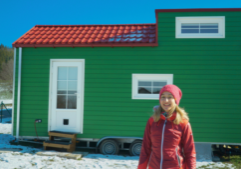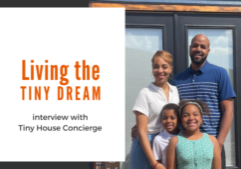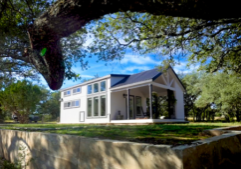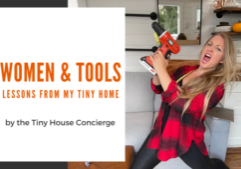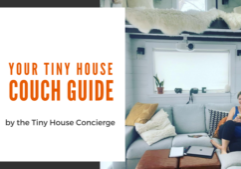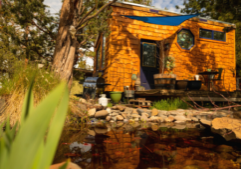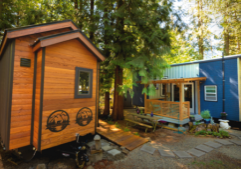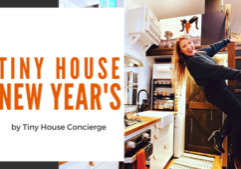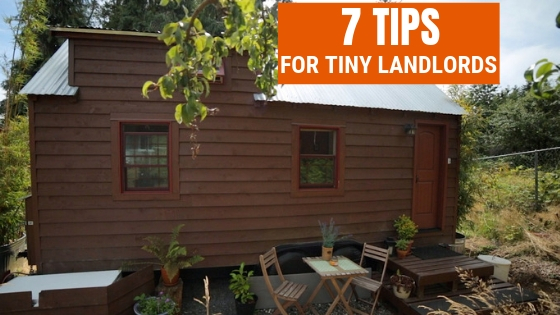
Tiny Home for Rent: 7 Tips for Tiny House Landlords
You might be surprised to learn that a lot of people are looking for a tiny home for rent. Here are 7 tips for becoming a successful tiny house landlord.
You might be surprised to learn that a lot of people are looking for a tiny home for rent. Tiny houses are all the rage right now in the real estate market. They have enough space to accommodate a single person or a minimalist couple living together, and sometimes even families.
The popularity of tiny homes is increasing by the day as more people are looking for affordable housing alternatives. A lot of millennials find the prospect of taking up a tiny house as a permanent solution to housing very intriguing. Baby boomers looking to downsize are interested in these miniature dwelling spaces, too, and everyone in between, like Gen X couples.
Investing in a tiny house by capitalizing on the growing trend of buying to rent is a smart decision. You will most assuredly begin to realize modest profits in the next five years or so. And the best part, you'll be providing affordable rent. Or you're inspiring someone to try out tiny living, creating a memorable experience.
Here are seven tips for becoming a successful tiny house landlord.
-
Prepare Your Tiny Home for Rent
Adequate preparation for renting any sort of house is an essential process of property marketing. Getting your tiny house ready, however, is a bit more complicated than most. Due to the minimalist nature of the space, it is important to declutter the home as much as possible.
People would not find it sensible to live in a tiny home if it means being deprived of certain luxuries or storage space. One method of maximizing one room, for example, is to get multipurpose furniture.
Having a couch that can double up as a bed is a convenient method of utilizing the space available. Any built-ins are a bonus for tenants without furniture of their own. Also, due to tricky dimensions, you probably want to leave in place any other furniture items.
This approach could help generate more revenue for you as you can upcharge for a furnished space as well, or maybe just increase the deposit to cover wear and tear.
-
The Features of Your Tiny Home
The amenities and features that come with your tiny home are fundamental in marketing your tiny house. A tiny home should take up about the same size as a large hotel room. It's crucial that use the space in the right ways.
Amenities such as Wi-Fi connectivity and kitchen size will help market your tiny home to prospective tenants. Look up your local competition, like apartment buildings and RV parks to compare the amenities and price they offer against yours.
Equip your tiny home with features that your competition may or may not have, such as an outdoor lounge space or on-site storage, like a shed. The availability of such features helps in increasing property value to prospective tenants.
-
Length of Stay
It is essential to know if you’ll be renting out to permanent tenants or short-term tenants such as tourists or seasonal visitors. Detailed insight into your preferred tenancy option will also help you choose the best location to place your tiny home. Will your backyard work, or does THOW/RV resort make more sense?
If temporary residency appeals more to you, then you should consider various factors. Are there any festivals or local events nearby? How is the seasonal snowbird traffic pattern structured?
For more extended leases, close proximity to colleges makes students a great group to target. Dorms are expensive, and so are apartments. Many students understand that living in tiny homes is a way to save money. It also gives them the feeling of independence hence why they find tiny homes so attractive.
-
Pick the Ideal Location
When picking the best spot to place your tiny home, you have to put your future tenants into consideration. If not, you might experience challenges convincing tenants to move into your tiny house.
What are the needs of your target market? How accessible is your tiny home? What places, activities, and amenities such as schools or hospitals are available to make your listing attractive?
What are the legalities of different location options? Also, consider all potential costs like permitting, and for Resort locations, lot lease fees?
Acquiring and understanding this information is crucial as it will help you position yourself as a budding entrepreneur. The best way to get this information is through vigorous research.
-
Learn About the Relevant Rules and Regulations
Tiny houses are held to specific standards of housing, and some compare differently to traditional housing structures. Some states and local governments have been getting stricter with their approach to short term rentals. Certain areas, for example, limit the number of Airbnbs.
If your house is on wheels, then it might cause you a certain level of trouble due to its ease of mobility. In many areas, RV arrangements are not permitted at all or have strict two-week limits.
It is vital that you understand the building and zoning codes governing ownership of tiny homes before investing in one. Learn more about that by watching Living Tiny Legally and following our Advocacy News page.
-
Prioritize Your Hospitality
What will your tenant or customer remember about their experience with you?
Was it the handwritten welcome note, your advice of activities in the area, or your keen attentiveness to an organization? You want your customers to give excellent online reviews.
Let them do the marketing for you. Bad experiences will work against you as they will deter other customers from booking with you.
And for longer-term tenants, what helpful feedback did they provide? Like the complexity of composting toilet maintenance, or other aspects that you can simplify for current and future renters.
-
Make It Green
It is important to note that a lot of people with interest in tiny homes are concerned about their environmental footprint. They want to be associated with structures that use renewable energy and are designed from sustainable material.
The tiny home movement is strongly linked to a call for higher environmental responsibility, and this should be evident in your design choices. As the landlord, you’ll also gain from applying eco-friendly measures to your property.
Solar-powered houses, for example, have low energy costs. They also do not have to be connected to the local power grid meaning mobility of the house will prove less stressful if need be.
Good Things Come in Small Packages
The tiny home movement has really grown popular across the country. The idea of minimalist living has motivated prospective home buyers and homeowners to rethink their housing choices with respect to their life’s desires.
With the continued difficulty with financing, more and more people are interested in a rent-to-own tiny house or long-term rental. Unfortunately, the options are very limited.
Whether you are an existing owner, or looking to buy a tiny home for rent, investing in a growing opportunity can get you an enormous payoff for such a small investment.

